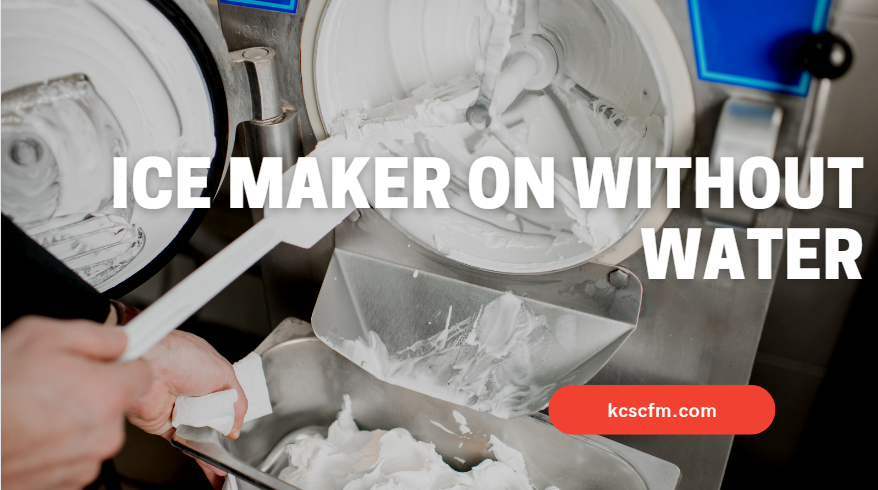Have you ever turned on your ice maker only to find that it doesn’t have any water in it? If so, you’re not alone. This is a common problem that can be caused by a variety of factors. In this blog post, we will explore the most common causes of an ice maker leaving on without water.
We will also provide some tips on how to prevent this from happening in the future. Read on to learn more about this common issue and how to solve it.
What is an ice maker?
An ice maker is a device that produces ice. It is usually used in households and restaurants. There are two types of ice makers: portable and built-in. Portable ice makers are small, compact, and can be placed on a countertop or table. Built-in ice makers are larger and must be installed under a counter or in a custom cabinet.
How does an ice maker work?
An ice maker is a machine that produces ice. It does this by circulating cold water from a reservoir through a series of pipes and into a mold. The water in the mold freezes and becomes ice.
The ice maker has a cold water supply line and a drain line. The cold water supply line brings cold water to the ice maker. The drain line takes any water that is not turned into ice and drains it away.
The ice maker has two main components: the evaporator and the condenser. The evaporator is where the magic happens. It is a coils that gets very cold, typically between -10°F and -20°F. When the cold water from the supply line runs through the coils, it turns to ice.
The condenser is responsible for getting rid of any heat that is created by the evaporator. If the heat from the evaporator was not removed, it would melt the ice that was just created.
What happens when you leave your ice maker on without water?

If you leave your ice maker on without water, it will continue to run through its cycle and will eventually overheat. This can cause the ice maker to break or catch fire.
The ice maker will continue to cycle in an attempt to make ice. However, since there is no water available, the ice maker will not be able to produce any ice.
If this continues for too long, the ice maker can overheat and become damaged.
How to prevent your ice maker from leaving on without water
If you’ve ever come home to find your ice maker left on without water, you know how frustrating it can be. Not only does it mean that you have no ice, but it also means that your ice maker is at risk of damaging itself.
There are a few things that you can do to prevent your ice maker from leaving on without water
- Check the fill line: Make sure that the fill line is properly positioned so that the ice maker can fill with water.
- Check the float switch: The float switch is what tells the ice maker when to stop filling with water. If this switch is stuck, it could cause the ice maker to continue running even when there’s no water left.
- Check for leaks: Leaks can cause the ice maker to run out of water quickly. Inspect your ice maker and its connections for any signs of leaks.
- Empty the reservoir: If your ice maker has an internal reservoir, make sure to empty it out periodically so that it doesn’t become overloaded and cause the machine to shut off.
- Clean the filters: Dirty filters can restrict water flow to the ice maker, causing it to shut off prematurely. Clean or replace your filters as needed.
Conclusion
If you’ve ever left your ice maker on without water, you know it can be a huge pain to clean up. Not only is it a waste of water, but it can also damage your ice maker.
If you’re looking to avoid this mess, there are a few things you can do. First, make sure to always turn off your ice maker when you’re not using it. Second, if you’re going to be away from home for an extended period of time, disconnect your ice maker from the water supply so that it can’t accidentally turn on and start flooding your kitchen.
By following these simple tips, you can keep your ice maker in good working condition and avoid any costly repairs.

Hi there! I’m Sam Hendricks, and I’m a repair technician and expert. I created this website to help people like you save money and time by fixing your own appliances.
Over the years, I’ve seen people spend a lot of money on unnecessary repairs or replacements. That’s why I decided to share my expertise and create easy-to-follow guides for fixing appliances on your own.
